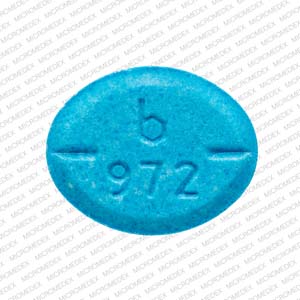

With normal urine pHs approximately half of an administered dose of amphetamine is recoverable in urine as derivatives of alpha-hydroxy-amphetamine and approximately another 30% to 40% of the dose is recoverable in urine as amphetamine itself. However, due to the probability of auto-inhibition and the lack of information on the concentration of these metabolites relative to in vivo concentrations, no predications regarding the potential for amphetamine or its metabolites to inhibit the metabolism of other drugs by CYP isozymes in vivo can be made. In vitro experiments with human microsomes indicate minor inhibition of CYP2D6 by amphetamine and minor inhibition of CYP1A2, 2D6, and 3A4 by one or more metabolites. Since CYP2D6 is genetically polymorphic, population variations in amphetamine metabolism are a possibility.Īmphetamine is known to inhibit monoamine oxidase, whereas the ability of amphetamine and its metabolites to inhibit various P450 isozymes and other enzymes has not been adequately elucidated. Although the enzymes involved in amphetamine metabolism have not been clearly defined, CYP2D6 is known to be involved with formation of 4-hydroxy-amphetamine. Alpha-hydroxy-amphetamine undergoes deamination to form phenylacetone, which ultimately forms benzoic acid and its glucuronide and the glycine conjugate hippuric acid. Norephedrine and 4-hydroxy-amphetamine are both active and each is subsequently oxidized to form 4-hydroxy-norephedrine. The effect of food on the bioavailability of dextroamphetamine saccharate, amphetamine aspartate, dextroamphetamine sulfate and amphetamine sulfate tablets has not been studied.Īmphetamine is reported to be oxidized at the 4 position of the benzene ring to form 4-hydroxyamphetamine, or on the side chain α or β carbons to form alpha-hydroxy-amphetamine or norephedrine, respectively. The PK parameters (C max, AUC 0-inf) of d-and l-amphetamine increased approximately three-fold from 10 mg to 30 mg indicating dose-proportional pharmacokinetics. The mean elimination half-life (t 1/2) for d-amphetamine was shorter than the t 1/2 of the l-isomer (9.77 to 11 hours vs. Following administration of a single dose 10 or 30 mg of dextroamphetamine saccharate, amphetamine aspartate, dextroamphetamine sulfate and amphetamine sulfate tablets to healthy volunteers under fasted conditions, peak plasma concentrations occurred approximately 3 hours post-dose for both d-amphetamine and l-amphetamine. The 12.5 mg, 15 mg, 20 mg and 30 mg also contain FD&C Yellow #6 Aluminum Lake.ĭextroamphetamine saccharate, amphetamine aspartate, dextroamphetamine sulfate and amphetamine sulfate tablets contain d-amphetamine and l-amphetamine salts in the ratio of 3:1. The 5 mg, 7.5 mg and 10 mg also contain FD&C Blue #1 Aluminum Lake. In addition, each tablet contains the following inactive ingredients: colloidal silicon dioxide, compressible sugar, corn starch, magnesium stearate, microcrystalline cellulose and saccharin sodium.


Amphetamine Aspartate Monohydrate Equivalentġ 1.25 mg of Amphetamine Aspartate Monohydrate equivalent to 1.17 mg Amphetamine Aspartate (Anhydrous) as suppliedĢ 1.875 mg of Amphetamine Aspartate Monohydrate equivalent to 1.755 mg Amphetamine Aspartate (Anhydrous) as suppliedģ 2.5 mg of Amphetamine Aspartate Monohydrate equivalent to 2.34 mg Amphetamine Aspartate (Anhydrous) as suppliedĤ 3.125 mg of Amphetamine Aspartate Monohydrate equivalent to 2.925 mg Amphetamine Aspartate (Anhydrous) as suppliedĥ 3.75 mg of Amphetamine Aspartate Monohydrate equivalent to 3.51 mg Amphetamine Aspartate (Anhydrous) as suppliedĦ 5 mg of Amphetamine Aspartate Monohydrate equivalent to 4.6 mg Amphetamine Aspartate (Anhydrous) as suppliedħ 7.5 mg of Amphetamine Aspartate Monohydrate equivalent to 7.03 mg Amphetamine Aspartate (Anhydrous) as supplied


 0 kommentar(er)
0 kommentar(er)
